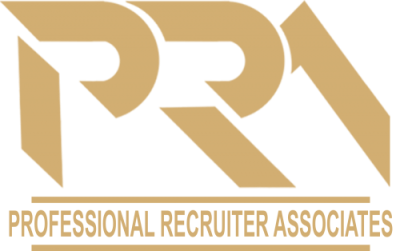Career Development: 5 Activities that Should Be in Every Program
 Career
Career
Article Link: https://www.hrbartender.com/2019/recruiting/career-development-activities/
By: Sharlyn Lauby
Editor’s Note: Today’s post is brought to you by our friends at Criteria Corp, a leading provider of pre-employment testing services. If you want to learn more about how pre-employment testing can benefit your recruiting strategy, check out Criteria Corp’s “Definitive Guide to Pre-Employment Testing”. I found this to be a comprehensive guide that I keep on the corner of my desk all the time. Enjoy the article!)
I don’t have to remind anyone that recruiting is a challenge right now. The unemployment rate has fallen to 3.6%, the lowest it’s been since December 1969. I also don’t have to tell you that, at some point, all of the Boomers in your workforce are really going to retire. According to Pew Research Center, 10,000 people a day turn of retirement age. That number is expected to continue for the next decade. And while turning retirement age doesn’t mean that people will immediately retire, it does mean that at some point in the not too distant future, they will.
What is interesting to me is that, with all the conversation about low unemployment, skills gaps, phased retirement strategies, etc. that more organizations aren’t focused on career development. I mean the future workforce must come from somewhere. I don’t mean this is to be flip commentary, but an organization’s future workforce isn’t going to miraculous appear out of nowhere.
This means organizations need to step up their learning and development game. It doesn’t matter whether the organization decides to build an internal learning department or enter into a strategic partnership with a learning organization – like a college or university. What matters is that organizations have some sort of career development program in place.
5 Activities that Every Career Development Program Should Have
It’s easy to say, “Put in a career development program.” Reality is, it’s hard figuring out what activities to include and where to include them. Here are five things to consider when designing your career development program:
- Goals. Think about this two-fold. First, all programs need goals. In the case of career development, the program needs organizational goals. Determine what the program goals will be and make sure everyone is onboard with those goals. Second, career development is often about setting goals. It could make sense to build a module that teaches employees how to set their career goals.
- Assessments. There are many types of assessments on the market. Cognitive ability testing can provide the company and employees with a baseline for career development conversations. Organizations can administer cognitive ability assessments during the hiring process to understand the candidate’s trainability. Then use that information when the candidate is hired for their career development.
- Training and Development. I like to draw a distinction between training and development. Training is for the jobs that employees hold today. Development is for the jobs that employees will have in the future. To me, career development is about both. Career development programs should include both the technical skills and soft skills employees need to be successful today as well as in the future.
- Variety of Learning Methods. Today’s career development opportunities are awesome because organizations can provide them in a variety of formats: conferences, webinars, blogs, podcasts, microlearning, etc. You get the point. Each of these formats has pros and cons in terms of scalability, cost, development time, technology requirements, etc. Companies can put together development that works well for them and the employee.
- Feedback Mechanisms. An employee’s thoughts about their career can change or shift. The company’s view on the employee’s career can also shift. It’s important that those “shifts” are discussed. Regular feedback conversations between the manager and employee about career development should take place. It doesn’t need to happen in every discussion, but a one-on-one meeting would be a common time to check-in and make sure that the company and employee are on the same page.
These five activities can take place during many phases of the employee life cycle. For example, we talked about cognitive ability assessments being used during recruiting and training. Technical training often takes place during onboarding. And many organizations are using video or webinars for refresher training. Goal-setting, feedback, and soft skills development could happen during performance management.
Use Career Development to Meet Today’s Staffing Needs
It’s time for companies to get creative with their staffing plans. I’m not saying to end traditional recruiting as we know it. But thinking about an employee’s career development can help organizations meet both their current and future staffing needs.
If you want to learn more about using career development as a part of your hiring strategy, join me and the Criteria Corp team on Tuesday, June 4 at 10a Pacific / 1p Eastern for the webinar “Future-proof Your Workforce by Hiring for Trainability”. And if you can’t make it for the live session, go ahead and sign up anyway to get the recording. I look forward to seeing you then.

Professional Recruiter Associates